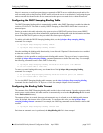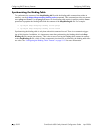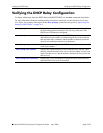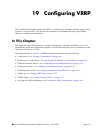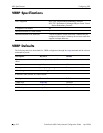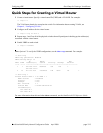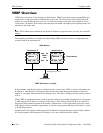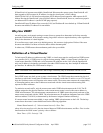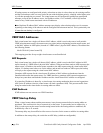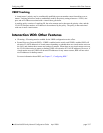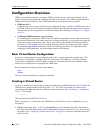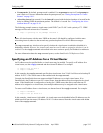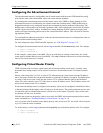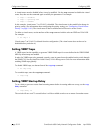
Configuring VRRP VRRP Overview
OmniSwitch 6600 Family Network Configuration Guide April 2006 page 19-5
If OmniSwitch A becomes unavailable, OmniSwitch B becomes the master router. OmniSwitch B will
then respond to ARP requests for IP address A using the virtual router’s MAC address
(00:00:5E:00:01:01). It will also forward packets for IP address B and respond to ARP requests for IP
address B using the OmniSwitch’s physical MAC address. OmniSwitch B, however, cannot accept pack-
ets addressed to IP address A (such as ICMP ping requests).
OmniSwitch B uses IP address B to access the LAN, but IP address B is not backed up. If OmniSwitch B
becomes unavailable, IP address B is unavailable.
Why Use VRRP?
An end host may use dynamic routing or router discovery protocols to determine its first hop toward a
particular IP destination. With dynamic routing, large timer values are required and may cause significant
delay in the detection of a dead neighbor.
If an end host uses a static route to its default gateway, this creates a single point of failure if the route
becomes unavailable. End hosts will not be able to detect alternate paths.
In either case, VRRP ensures that an alternate path is always available.
Definition of a Virtual Router
To back up an IP address or addresses using VRRP, a virtual router must be configured on VRRP routers
on a common LAN. A VRRP router is a physical router running VRRP. A virtual router is defined by a
virtual router identifier (VRID) and a set of associated IP addresses on the LAN. (On the OmniSwitch
only one
IP address is assigned to an interface, but other VRRP routers may have multiple IP addresses
per interface. In addition, the VRID must be unique.)
Note. A limitation of the OmniSwitch is that a single VRID may only be associated with one VLAN.
Each VRRP router may back up one or more virtual routers. The VRRP router that contains the physical
interfaces to which the virtual router IP addresses are assigned is called the IP address owner. If it is avail-
able, the
IP address owner will function as the master router. The master router assumes the responsibility
of forwarding packets sent to the IP addresses associated with the virtual router and answering
ARP
requests for these addresses.
To minimize network traffic, only the master router sends VRRP advertisements on the LAN. The IP
address assigned to the physical interface on the current master router is used as the source address in
VRRP advertisements. The advertisements communicate to all VRRP routers the priority and state of the
master router associated with the VRID. The advertisements are IP multicast datagrams sent to the VRRP
multicast address 224.0.0.18 (as determined by the Internet Assigned Numbers Authority).
If a master router becomes unavailable, it stops sending VRRP advertisements on the LAN. The backup
routers know the master is unavailable based on the following algorithm:
Master Down Interval = (3 * Advertisement Interval) + Skew Time
where Advertisement Interval is the time interval between VRRP advertisements, and Skew Time is calcu-
lated based on the
VRRP router’s priority value as follows:
Skew Time = (256 - Priority) / 256



